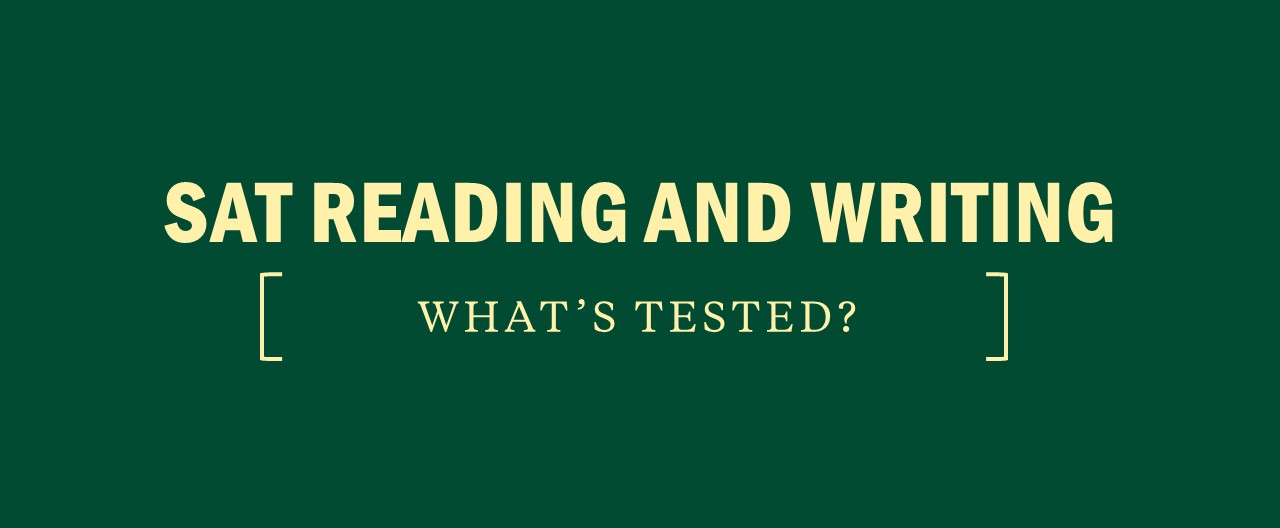SAT Reading Comprehension Timing Tips
When I ask my students what they find challenging about reading comprehension, the most popular answer is always the same—“timing.” (Runners-up include “understanding the passage” and “getting bored.”) Beating the clock on the ACT or SAT reading comprehension test isn’t as hard as most people think it is, and it doesn’t entail what most people think it does.
Here are a few basic (and not-so-basic!) tips to help you come to terms with and conquer the timing limitations of the ACT and SAT reading tests.
SAT Reading Comprehension Timing Tip #1: Don’t complain about the clock
Most of your competition devotes a significant amount of mental energy to whining about the parameters of the test. “It’s not fair how little time they give us!” “I could ace the test if only I had as much time as I wanted!” As I explained in last week’s post about scaled scoring, having more time wouldn’t actually raise your score. If the reading comprehension test were ten minutes longer, you and everybody else would get more questions right; and because the test is scaled, nobody’s score would change.
So instead of complaining about the time you don’t have, learn how to make the most of the time you do have. Moaning about the test won’t raise your score, but learning how to be more efficient and more accurate than your competition certainly will.
SAT Reading Comprehension Timing Tip #2: Embrace your reading speed
Nearly all of my students feel subconscious about their reading speed. I sympathize: when you run out of time on a test, it’s natural to think you would have finished if you’d only read faster. Heck, I felt this way myself when I ran out of time on reading tests, and it wasn’t until I became a Kaplan teacher that I realized—to my astonishment—that this natural conclusion is completely wrong.
Think about the time you spend reading the passage. Then think about the time you lose because you zoned out and had to re-read a whole paragraph. Or the time you lose playing ping-pong between two answer choices because you don’t understand the passage well enough to see why one of them is wrong. Or the time you lose bashing your head against an impossible question that you should have just skipped.
At the end of the day, your reading speed is not the reason you get questions wrong. Mistakes occur because of lapses in strategy or comprehension or both. If you read faster, you’ll make all the same mistakes—you’ll just make them faster.
So embrace your reading speed. If you can read each passage one time, the first time, and grasp it well enough to confidently answer questions, then you’ll be way ahead compared to someone who reads twice as fast as you do but zones out, misses the key points of the passage, and trips over every trap in the answer choices.
SAT Reading Comprehension Timing Tip #3: Skip the impossible questions
By the time most students realize that it’s time to give up on a question, they’ve already spent too much time on it. Say you spend a minute puzzling over a ridiculous question, and say that happens four times. In those four minutes you could have read and annotated an entire passage!
I know from personal experience that skipping questions is much easier said than done. I used to get into an ego battle with every test I took and could never bring myself to skip questions. But while skipping questions is easier to say than to do, it CAN be done, and I did eventually develop the ability to do it. When you take practice tests, make a conscious effort to abandon questions at the earliest of sign of a roadblock. It’s much better to skip the hardest 2-3 questions of each passage (but get to all the passages) than to skip an entire passage and miss out on all of its easy questions.
SAT Reading Comprehension Timing Tip #4: Annotate the reading comprehension passage
Note-taking on a reading comprehension test is tricky business. Many students don’t want to take notes because they’re struggling with time and can’t imagine doing anything that would cut into their time bank even further. On the other hand, many students who do take notes don’t do it the right way, so their decision does end up being a waste of time!
The key when taking notes during the reading comprehension section is to annotate the passage rather than summarizing it. For example, if you read a passage about pandas, your notes for each paragraph might be something like this:
P1: Pandas, background
P2: Diet
P3: Mating habits
P4: Endangered
Notice that these notes don’t tell you much of anything about pandas. But if I get a question about panda food, I immediately know to go paragraph two to look it up. And if I don’t get any questions about panda food, then thank goodness I didn’t waste gobs of time summarizing all the factual information from the second paragraph!
When you read a passage on the ACT or SAT, don’t try to process all of the information. This is what causes fatigue, boredom, and zoning out. Instead, try to understand the broad strokes of the passage: why the author wrote it, what the author’s main idea is, and what direction the passage takes. Imagine you’re the author’s editor and he or she is pitching the project to you.
“What do you want to write about, Author?”
“Pandas.”
“Okay. And what about pandas do you want to write about?”
“Their diet, their mating habits, and how endangered they are.”
Making annotations helps you stay awake while you read and not get burned out by the reams of facts and dense language. When you get to the questions, the notes you made will help you find the useful information more quickly.
SAT Reading Comprehension Timing Tip #5: Look for right answers, not good answers
If you’re like most test takers, you waste way too much time sifting through reading comprehension answer choices. I vividly remember playing answer choice ping-pong all the time, going back and forth between choice B and choice D trying to decide which was “better.”
The fact is that there are no “good” answer choices on the ACT and SAT. Each question has one right answer choice and three wrong ones. If you think two answers are both right, then that means you’re missing the reason why one of them is wrong. Find that reason, and you’ve beaten the problem.
(By the way, a lot of people think they’re smarter than the test makers and spend a lot of time and energy convincing themselves that more than one choice is indeed correct. Don’t fall for this trap. Who do you think knows better: you, or the question writers who get 36’s and 1600’s in their sleep? In a fight between you and the ACT or the SAT, the first thing you should do is immediately assume you’re wrong. Swallow that ego! Once you admit you’re wrong, you can get on with the business of studying the problem, understanding your mistake, and learning how to avoid it in the future.)
A great way to put yourself in the right mindset is to predict what you think the answer should be beforeyou look at the answer choices. Read the question carefully. Look for clues. Research the passage. Then think in general about what the right answer should look like. When you have an idea, navigating the choices gets a lot faster. After reading each choice, you don’t have to go “hmmmmmm” and ponder at length about how “good” it sounds. Instead, you just pick the choice if it matches what you predicted or cross it out if it doesn’t. You’re never going to be stuck between B and D if you pick B the moment you see it and never read D in the first place!
SAT Reading Comprehension Timing Tip #6: Crush it
Okay, this isn’t really a real tip. But going into the reading comprehension section, armed with a positive mindset and hours of practice, you will be able to finish the reading comp test on time and have a major advantage over your competition on Test Day. Good luck!
Boris loves teaching complex problems and helping students overcome their Test Day fears. He brings his sense of humor to the classroom–as well as his love of strategy board games.



